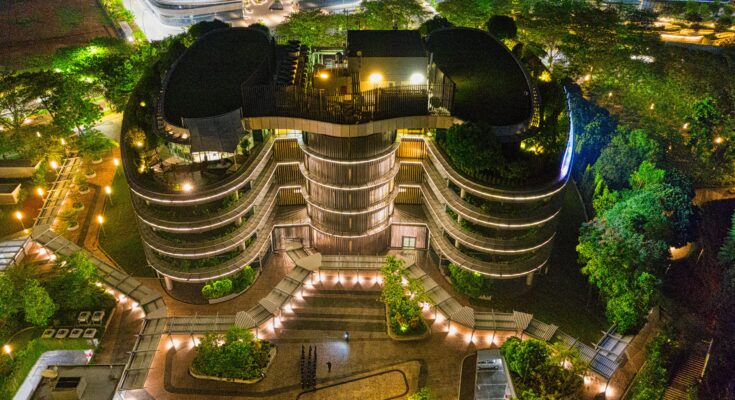The Nonresidential Green Buildings Global Market Report 2024 by The Business Research Company provides market overview across 60+ geographies in the seven regions – Asia-Pacific, Western Europe, Eastern Europe, North America, South America, the Middle East, and Africa, encompassing 27 major global industries. The report presents a comprehensive analysis over a ten-year historic period (2010-2021) and extends its insights into a ten-year forecast period (2023-2033).
Learn More On The Nonresidential Green Buildings Market:
https://www.thebusinessresearchcompany.com/report/nonresidential-green-buildings-global-market-report
According to The Business Research Company’s Nonresidential Green Buildings Global Market Report 2024, The nonresidential green buildings market size has grown rapidly in recent years. It will grow from $1034.1 billion in 2023 to $1160.01 billion in 2024 at a compound annual growth rate (CAGR) of 12.2%. The growth in the historic period can be attributed to environmental awareness and regulations, energy efficiency and cost savings, corporate social responsibility (csr), occupant health and productivity, market differentiation and brand image.
The nonresidential green buildings market size is expected to see rapid growth in the next few years. It will grow to $1853.45 billion in 2028 at a compound annual growth rate (CAGR) of 12.4%. The growth in the forecast period can be attributed to stringent green building standards, global climate change mitigation goals, rising demand for healthy workspaces, financial incentives and tax credits, evolving tenant preferences. Major trends in the forecast period include water conservation measures, circular economy principles, carbon neutrality targets, health and wellness-centric design, government incentives and regulations.
An increasing need for sustainable and eco-friendly solutions has contributed to the growth of the nonresidential green buildings market. According to the USGBC (U.S. Green Building Council) report, green buildings can reduce carbon emissions by 34% and consume 25% less energy than conventional buildings. For instance, in 2021, according to the annual ranking report from the US Green Building Council (USGBC), China is ranked first with 1,077 certified LEED projects that reduced carbon emissions, followed by Canada with 205 LEED projects and India with 146 LEED projects. It has now become essential for commercial construction companies to give priority to sustainable design and construction techniques to utilise our planet’s finite resources in a sensible way. Encouraging sustainable business practises is an important reason for building green in most countries, for the conservation of energy and protection of natural resources. Moreover, increased concerns about global warming resulted in sustainable and eco-friendly activities, which increased the demand for the growth of nonresidential green buildings market.
Get A Free Sample Of The Report (Includes Graphs And Tables):
https://www.thebusinessresearchcompany.com/sample.aspx?id=3979&type=smp
The nonresidential green buildings market covered in this report is segmented –
1) By Product: Interior Products, Exterior Products
2) By Component: Roofing, Insulation, Framing, Exterior Siding, Interior Finishing, Other Components
3) By Application: Office, Education, Hotels and Restraurants, Retail, Institutional/ Assembly, Healthcare , Warehouse
Living roofs, or green roofs, are increasingly being implemented in green buildings. A green roof is a roof of a building that is covered with vegetation and soil, or a growing medium, planted over a waterproofing membrane. Green roofs last longer when compared to conventional roofs. They also reduce energy costs with natural insulation, reduce temperatures (heat and cold) by absorbing and trapping them, reduce storm water runoff, filter pollutants and carbon dioxide out of the air, and increase wildlife habitat in built-up areas. It is believed that to reduce the ambient temperature of the city by 2%, 8% of the roofs in the city must be greener. In the USA, around 25 cities have some sort of programme to encourage green roofs, and in Portland, Ore., it is mandatory to have vegetation cover 100% of the roofs on buildings in the central city over 20,000 square feet (with some exceptions). Therefore, green roofs are an emerging trend in the nonresidential green buildings market.
The nonresidential green buildings market report table of contents includes:
- Executive Summary
- Nonresidential Green Buildings Market Characteristics
- Nonresidential Green Buildings Market Trends And Strategies
- Nonresidential Green Buildings Market – Macro Economic Scenario
- Global Nonresidential Green Buildings Market Size and Growth
.
.
.
- Global Nonresidential Green Buildings Market Competitive Benchmarking
- Global Nonresidential Green Buildings Market Competitive Dashboard
- Key Mergers And Acquisitions In The Nonresidential Green Buildings Market
- Nonresidential Green Buildings Market Future Outlook and Potential Analysis
- Appendix
Top 5 Major Key Players Are:
- Turner Construction Company
- AECOM Technical Services Inc
- Balfour Beatty Construction Inc
- Whiting-Turner Contracting Company
- The Whiting-Turner Contracting Company
Related Reports:
https://goodprnews.com/measuring-and-control-instruments-market/
https://goodprnews.com/meat-market/
https://goodprnews.com/mechanical-power-transmission-equipment-market-size/
Contact Us:
The Business Research Company
Europe: +44 207 1930 708
Asia: +91 88972 63534
Americas: +1 315 623 0293
Email: [email protected]
Follow Us On:
LinkedIn: https://in.linkedin.com/company/the-business-research-company
Twitter: https://twitter.com/tbrc_info
Facebook: https://www.facebook.com/TheBusinessResearchCompany
YouTube: https://www.youtube.com/channel/UC24_fI0rV8cR5DxlCpgmyFQ
Blog: https://blog.tbrc.info/
Healthcare Blog: https://healthcareresearchreports.com/
Global Market Model: https://www.thebusinessresearchcompany.com/global-market-model




